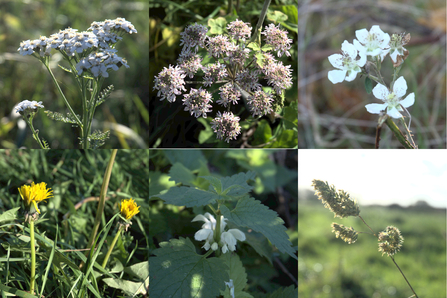The temperature has dropped, and it’s starting to feel like winter. Trees have lost most of their leaves, and a lot of our wildlife is less visible than it was in spring. However, there are still some intrepid animals out there, which will be active all through the cold months, and will be searching for food to keep them going.
As well as keeping an eye out for winter migrant birds and late (or early) flying insects this season, why not look at things from their perspective and focus on food sources? Fruit and berries such as haws, sloes, crab apples, rose hips, and ivy berries are particularly important for birds including species like fieldfare, redwing, and blackbird. There has been a good crop of berries in many places this year. Try keeping track of how long this source of food is available, for example by regularly checking a local heavily laden hawthorn, and noting when the last haws disappear.






